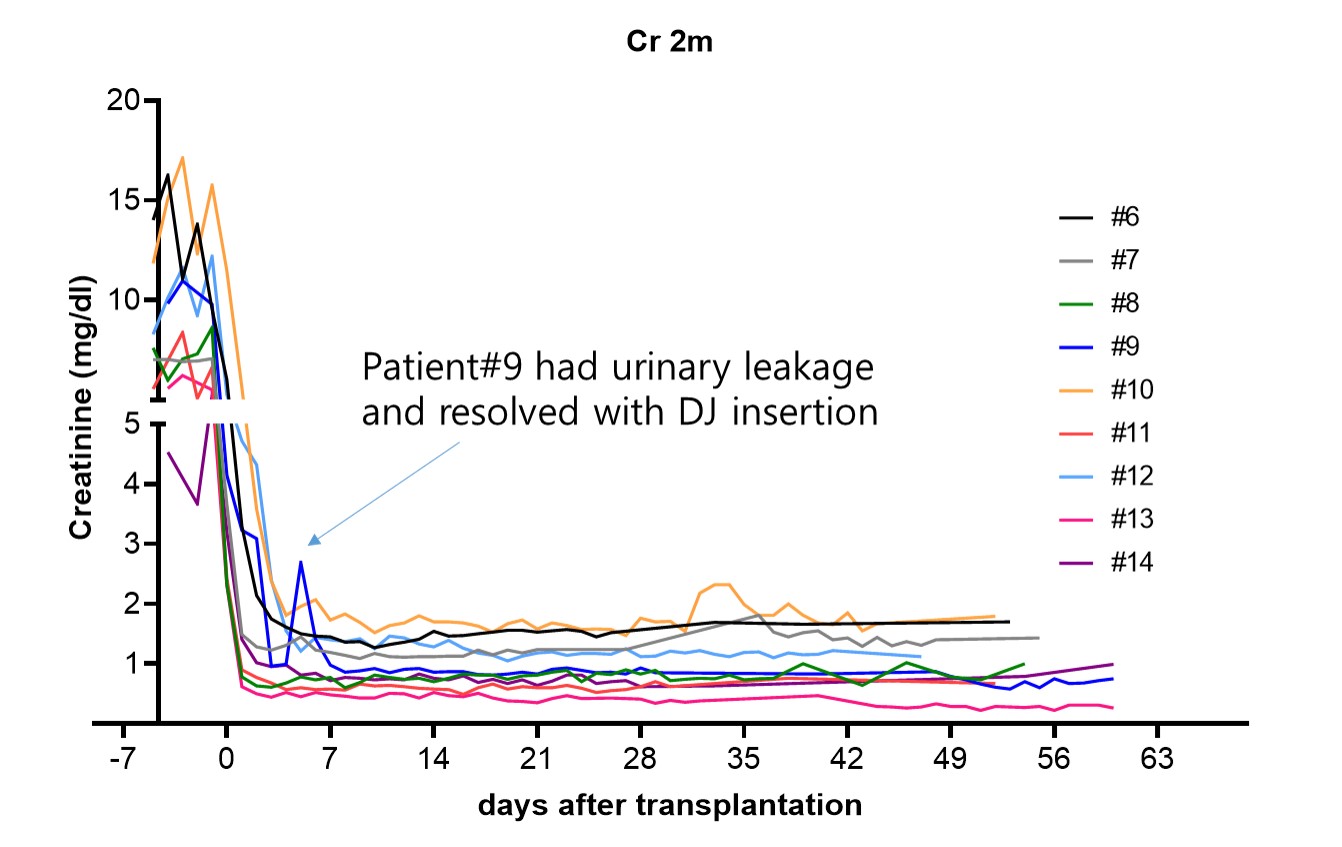Inducing Transient Mixed Chimerism without Chimeric Transition Syndrome for Tolerance Induction After Kidney Transplantation
Samsung Medical Center, Seoul, Korea, Republic of
Meeting: 2021 American Transplant Congress
Abstract number: 684
Keywords: Engraftment, Tolerance
Session Information
Session Name: Tolerance: Clinical Studies
Session Type: Poster Abstract
Session Date & Time: None. Available on demand.
Location: Virtual
*Purpose: Immunological or operational tolerance, defined as the absence of a destructive immune response to a transplanted tissue without ongoing immunosuppression, is one strategy that may improve the long-term results of organ transplantation; avoiding the morbidity associated with chronic immunosuppression and graft dysfunction. Inducing transient mixed chimerism is one of the way to operational tolerance after kidney transplantation (KT). Kawai and colleagues have reported on their experience about the inducing transient mixed chimerism and operational tolerance after KT. However, they reported that almost all patients experienced an early engraftment syndrome-like condition termed chimeric transition syndrome (CTS). This CTS is considered as a major hurdle to be overcame in this group.
*Methods: At first, we developed our protocol for combined kidney and bone marrow transplantation (CKBMT) based on the protocol of MGH. The only difference from the MGH regimen was the substitution of rATG for anti-CD2 mAb, which was not available in Korea. After experiencing side effects of preconditioning regimen including CTS, cyclophosphamide toxicity, and uncontrolled BK virus infection, we have revised protocol by reducing dose of cyclophosphamide (22.5 mg/kg x 2 doses) and adding fludarabine (10 mg/kg x 4 doses).
*Results: By far, we applied our latest revised protocol for 9 patients. Among them four patients successfully discontinued immunosuppression (IS) and five patients are on the process of IS weaning. All of them showed sufficient bone marrow suppression after preconditioning and transient mixed chimerism (2~24wk) after CKBMT. None of these patients showed unexplainable serum creatinine elevation in early post-operative period. (Figure. 1) Protocol biopsy performed at 2 week after CKBMT showed no abnormal findings in all patients. None of patients suffered from uncontrolled BK virus infection or side effect cyclophosphamide which were observed in patients treated with previous protocols.
*Conclusions: With the revised protocol, transient mixed chimerism can be induced without CTS. Further follow up is necessary to ensure the efficacy of this protocol in the aspect of inducing operational tolerance.
To cite this abstract in AMA style:
Lee K, Park J. Inducing Transient Mixed Chimerism without Chimeric Transition Syndrome for Tolerance Induction After Kidney Transplantation [abstract]. Am J Transplant. 2021; 21 (suppl 3). https://atcmeetingabstracts.com/abstract/inducing-transient-mixed-chimerism-without-chimeric-transition-syndrome-for-tolerance-induction-after-kidney-transplantation/. Accessed December 21, 2025.« Back to 2021 American Transplant Congress

